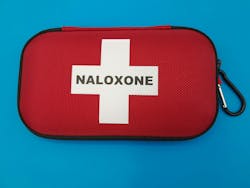Use of a lifesaving drug to reverse opioid drug overdoses is growing, but not fast enough. That’s according to new research in JAMA Network Open from The Ohio State University College of Medicine, College of Public Health and the National Registry of Emergency Medical Technicians.
In the first study of its kind, the research team looked at national use of naloxone by people without medical training to treat an opioid drug overdose.
The study team evaluated two years of data from the National Emergency Medical Services Information System, the national emergency medical services (EMS) patient care record database. From June 2020 to June 2022, there were more than 96 million EMS activations from nearly 14,000 agencies across 54 states and U.S. territories. EMS reported 744,078 patients receiving naloxone with 24,990 of them getting it from an untrained bystander before EMS arrived.
“Our findings revealed that people receiving naloxone from laypersons increased by 43.5% proving that public health efforts are working,” said Chris Gage, PhD student at the College of Public Health and corresponding author.
“Unfortunately, the study found there is more work to be done since only 3.4% of EMS activations involving naloxone received it from non-medical bystanders,” said Gage. “In a perfect world, this should be closer to a 100% highlighting a need to improve naloxone education, enhance access and investigate and remove obstacles to its use.”

